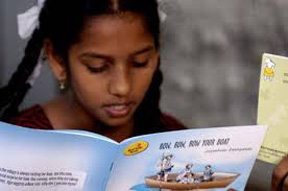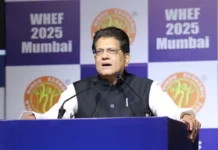 NEW DELHI: In a sign that shows India has a lot of catching up to do, the country’s ranking in the Human Development Index (HDI) remained unchanged at 135 in 2013, reflecting little improvement in the living standard of its people, says a United Nations Development Program report.
NEW DELHI: In a sign that shows India has a lot of catching up to do, the country’s ranking in the Human Development Index (HDI) remained unchanged at 135 in 2013, reflecting little improvement in the living standard of its people, says a United Nations Development Program report.
“India’s HDI value for 2013 is 0.586 – which falls in the medium human development category – positioning the country at 135 out of 187 countries. Between 1980 to 2013, India’s HDI value increased from 0.369 to 0.586,” said the UNDP report released on Thursday.
The report further said that none of the BRICS countries were in the high human development category and India remained at the bottom with lowest HDI value among them.
“India is the lowest performing country among the BRICS nations in all categories of the HDI with the exception of life expectancy, which is lower in South Africa as a result of the HIV/AIDS epidemic,” the report said.
Among the BRICS countries, Russia, Brazil and China are in the high HDI category. Russia secured the highest rank at 57, followed by Brazil at 79 and China at 91. South Africa and India rank in the middle category, securing 118th and 135th position respectively, it said.
The HDI reflects long-term progress in three basic dimensions of human lives – a long and healthy life, access to knowledge and a decent standard of living. In 2013 the study covered 187 countries, the same as in 2012 and 2011.
The report said that based on the data available on November 15, 2013, there were few countries with changed in ranks between 2012 and 2013.
Presenting a review of India’s progress in each of the HDI indicators between 1980 and 2013, it said, “The life expectancy at birth increased by 11 years, mean years of schooling increased by 2.5 years and expected years of schooling increased by 5.3 years.”
However, India’s 2013 HDI of 0.586 was below the average of 0.614 for countries in the medium human development group and also lower than the average of 0.588 for countries in South Asia.
“From South Asia, countries which are close to India in 2013 HDI ranking are Bangladesh and Pakistan with 142nd and 146th position respectively,” the report said.
On Gender Inequality Index (GII), based on reproductive health, empowerment and economic activity, India ranked 127 out of 152 countries.
“India has a GII value of 0.563, ranking it 127 out of 152 countries in the 2013 index. In India, 10.9 per cent of parliamentary seats are held by women, and 26.6 per cent of adult women have reached at least some secondary education compared to 50.4 per cent of their male counterparts.”
Female participation in the labor market is 28.8 per cent compared to 80.9 for men, it added.
On the parameters of Multi-dimensional Poverty Index (MPI), which identifies multiple deprivations in the same households in education, health and living standards, India’s 55.3 per cent of population were multi-dimensionally poor while an additional 18.2 per cent were near multi-dimensional poverty, the report said.
Introducing a new index, Gender Development Index (GDI), which is ratio of female to male HDI, in 2013 female HDI value for India stood at 0.519 in contrast with 0.627 for males.
The GDI was calculated for 148 countries.–PTI






